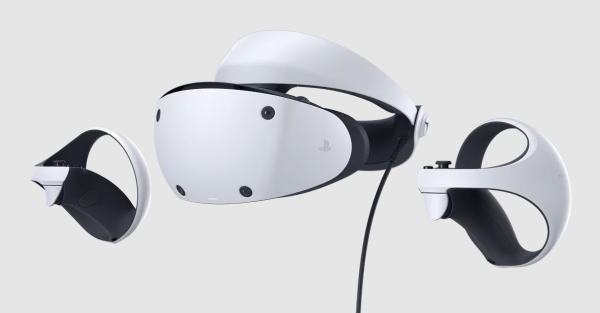Sony Not Planning Blu-Ray 3D Support for PlayStation VR 2
Sony isn’t planning Blue-ray 3D support for PlayStation VR 2, the company’s gaming hardware chief Yasuo Takahashi has confirmed. Takahashi heads Sony’s gaming division SIE and also steers the company’s global product strategy.
Although the first PlayStation VR had Blu-ray support, Sony how now confirmed that it is not planning Blu-ray 3D support for PlayStation VR 2.

In the first PlayStation VR, Sony implemented a software update within six months that transformed the headset into a 3D TV and enabled users to watch 3D movies in its “cinema mode.” The Blu-ray support proved popular with users as 3D movies are more immersive and impressive in virtual reality than with 3D glasses in movie theaters.
PlayStation VR 2 will not have this feature, at least in the short term.
Sony also dropped Blu-Ray 3D support for PlayStation 5 in 2020 so it was expected that it wouldn’t include support in PSVR 2. Blu-ray support in PS5 is needed for PSVR2 to play and display this media format.
Sony did not divulge the reasons for excluding Blu-Ray 3D support but the decision was likely prompted by a cost-benefit analysis of the usage data which drove it to exclude support for the format. Although PSVR 2 has a cinema mode just like the first PSVR, Sony probably doesn’t think Blu-ray support will be a key growth driver for the platform.
However, the exclusion of Blu-ray 3d support doesn’t necessarily mean the end of 3D movies. Sony’s head of the gaming division Takahashi said that relevant content from third parties like YouTube can still be distributed on the platform via an app.
The article in this Japanese publication details the development of the PSVR 2 headset and delves into the design decisions that the company made in the course of the development of the headset. Some of the main highlights include: –
- Sony began developing the PSVR 2 headset at about the same time that it was releasing the PlayStation VR 1 headset. This means Sony began developing the second-generation headset even bore it knew how well the first generation would perform in the market.
- The OLED display in the headset can support 10-bit color depth compared to the 8-bit in PSVR1. The PSVR2 headset has double the dynamic range of brightness of that of the PSVR1.
- Sony opted for Fresnel lenses as these provide a larger field of view without a thicker and heavier form factor compared to the aspherical lenses that were used in PSVR 1. Sony opted not to use the latest pancake lenses as these absorb too much light.
- Sony decided to incorporate eye-tracking in the headset to futureproof it. Takahashi says it is hard to imagine the device not providing eye-tracking support in five years.
- Sony carefully looked into the technical implementation of the passthrough mode and considered the use of two cameras in the middle.

